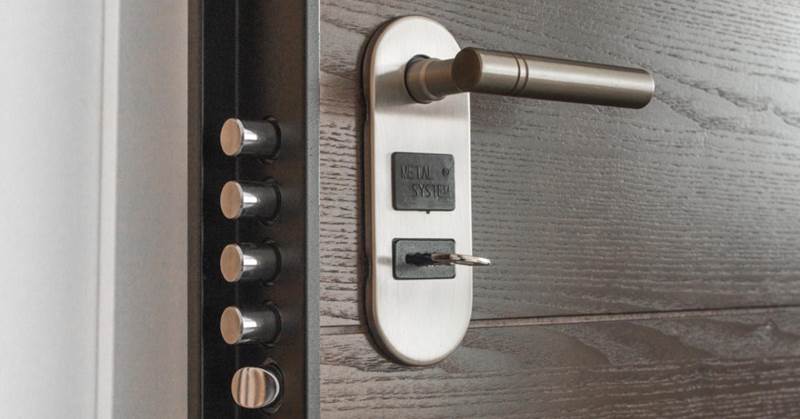In 2025, securing your home goes far beyond a simple key and cylinder. The front door is the first line of defense, and the lock you choose is its most critical component. With an overwhelming array of options, from time-tested traditional deadbolts to cutting-edge smart locks, making an informed decision can feel daunting.
This expert guide will cut through the marketing jargon, providing you with a detailed breakdown of home security door locks. We’ll explore the enduring strengths of traditional systems, delve deep into the innovative world of smart locks, highlight essential features, and help you select the best solution to protect your loved ones and valuables in the coming year.
The Foundational Choice: Smart Locks vs. Traditional Locks
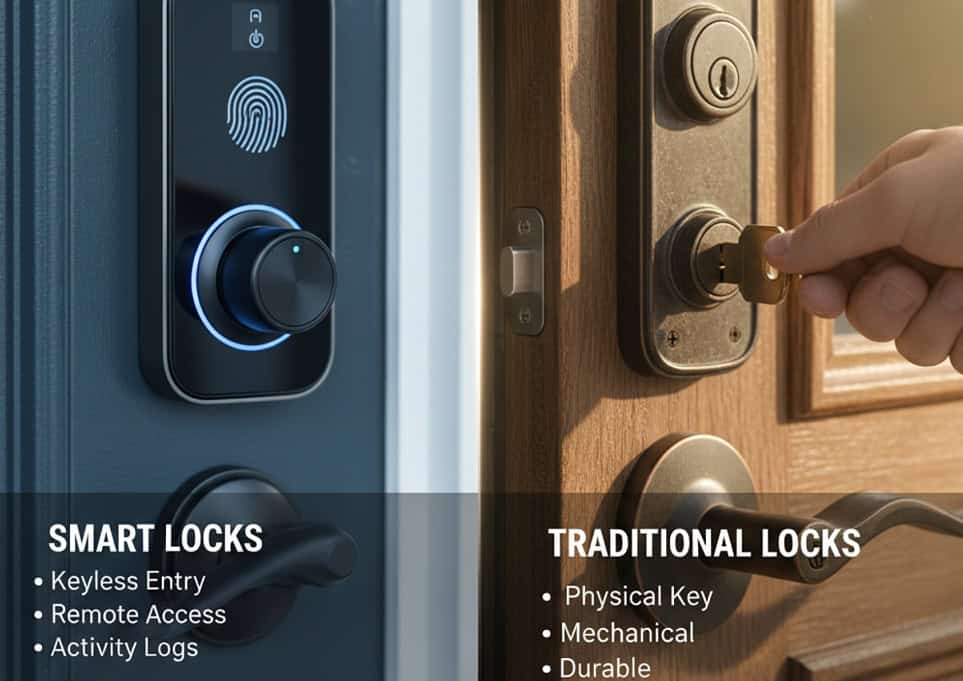
The debate between smart and traditional locks isn’t just about technology; it’s about lifestyle, security priorities, and budget. While traditional locks have served us for centuries, smart locks offer a new paradigm of convenience and control. Understanding the core differences is the first step in making the right choice for your home.
Traditional Locks: The Time-Tested Sentinels
What They Are: Traditional locks are mechanical devices that rely on a physical key to engage their internal mechanism (pins, tumblers, or wafers) and secure the door. They are “non-automated,” requiring manual action for every operation.
How They Work: When you insert the correct key and turn it, the key aligns the internal components of the lock (e.g., pins in a pin-tumbler lock), allowing the cylinder to rotate and retract or extend the bolt into the door frame.
Key Advantages:
- Reliability: Mechanical simplicity means fewer points of failure compared to electronic systems. They don’t rely on batteries, Wi-Fi, or electricity.
- Cost-Effective: Generally, much cheaper to purchase and install than smart locks.
- Durability: High-quality traditional locks (like Grade 1 deadbolts) are incredibly robust and difficult to force open.
- Privacy: No electronic data to potentially be compromised.
Potential Downsides:
- Inconvenience: Requires a physical key, which can be lost, stolen, or forgotten.
- Limited Features: No remote access, activity logs, or integration with smart home systems.
- Key Duplication: Keys can be easily duplicated if they fall into the wrong hands.
Smart Locks: The Future of Access Control
What They Are: Smart locks are electronically controlled door locks that can be operated and monitored remotely or wirelessly, typically via a smartphone app, keypad, fingerprint, or voice command. They are an integral part of a modern smart home security ecosystem.
How They Work: Instead of a physical key, smart locks receive pre-authorized operation instructions via wireless protocols (Wi-Fi, Bluetooth, Z-Wave, Zigbee) from a control panel, smartphone, or voice assistant. An internal motor or solenoid then engages the locking mechanism.
Key Advantages:
- Keyless Entry: Eliminates the need for physical keys, reducing the risk of loss or theft.
- Remote Access & Control: Lock or unlock your door from anywhere using your smartphone. Ideal for letting in guests, contractors, or checking if you locked up.
- Activity Logs: Track who enters and exits your home and when.
- Temporary Access Codes: Grant time-limited or single-use access to visitors without sharing a physical key.
- Integration: Seamlessly connect with smart home systems (Alexa, Google Home, Apple HomeKit) for voice control and automation (e.g., lights turn on when the door unlocks).
- Auto-Locking: Many smart locks can automatically lock after a set period or when you leave a geofenced area, preventing accidental unlocking.
- Notifications & Alarms: Receive instant alerts on your phone for suspicious activity, forced entry attempts, or if the door is left ajar.
- Visual Appeal: Often designed with sleek, modern aesthetics that complement contemporary home decor.
Potential Downsides:
- Power Dependency: Rely on batteries or wired power. Dead batteries mean you can be locked out, requiring a backup plan.
- Security Concerns: While encrypted, they can be vulnerable to hacking if your home network is compromised. Wireless signals can also be jammed.
- Cost: Generally, more expensive to purchase than traditional locks.
- Compatibility: Not all smart locks work with every door type or existing lock hardware.
- Connectivity Issues: Reliance on Wi-Fi or other wireless signals means performance can be affected by outages or signal interference.
Essential Features to Look for in 2025 Home Security Door Locks
Whether you lean towards smart or traditional, certain features are non-negotiable for robust home security.
1. Durability and Grade Ratings
Always check the lock’s ANSI/BHMA (American National Standards Institute/Builders Hardware Manufacturers Association) grade.
- Grade 1: Commercial-grade, highest security, best durability. Ideal for main entry doors.
- Grade 2: Residential security, excellent quality. Suitable for most residential applications.
- Grade 3: Basic residential security, minimal security. Not recommended for primary entry points. Always aim for at least a Grade 2 deadbolt for exterior doors.
2. Lock Type: Deadbolt is King
For ultimate security, a deadbolt lock is paramount. Unlike spring-bolt locks (found on doorknobs), a deadbolt cannot be forced open by shimming or prying the bolt.
- Single-Cylinder Deadbolt: Keyed on the outside, thumb turn on the inside. Most common and recommended for emergency egress.
- Double-Cylinder Deadbolt: Keyed on both sides. Offers higher security against forced entry from the inside (e.g., if a window is broken), but can be a fire hazard as it requires a key to exit during an emergency. Check local building codes, as double-cylinder deadbolts may be restricted or illegal in some residential areas.
3. Kick-In Resistance
A lock is only as strong as its weakest point. Reinforce your door frame with a heavy-duty strike plate secured with 3-inch screws that penetrate the wall studs, not just the door frame. This dramatically increases resistance to forced entry (“kick-ins”).
4. Anti-Pick and Anti-Bump Features
High-quality locks, both traditional and smart, incorporate features to resist common lock-picking and lock-bumping techniques. Look for terms like “anti-pick pins,” “restricted keyways,” or “bump-resistant cylinder.”
5. Smart Lock Specifics: Connectivity & Backup
- Wireless Connectivity: Wi-Fi provides direct internet access and remote control, but consumes more battery. Bluetooth is energy-efficient for proximity control. Z-Wave and Zigbee require a hub but offer better range and mesh networking for smart homes.
- Battery Life & Backup: Look for locks with long battery life (6-12 months is standard). Crucially, ensure there’s always a physical key override or a port for a 9V battery jump-start in case the main batteries die.
- Integration Ecosystem: Ensure the smart lock you choose is compatible with your existing smart home platform (Alexa, Google Home, Apple HomeKit, Samsung SmartThings) for seamless control.
Top Home Security Door Locks for 2025
Based on security, features, reliability, and user experience, here are some of the best home security door lock options for various needs.
1. August Wi-Fi Smart Lock : Best Overall Smart Lock
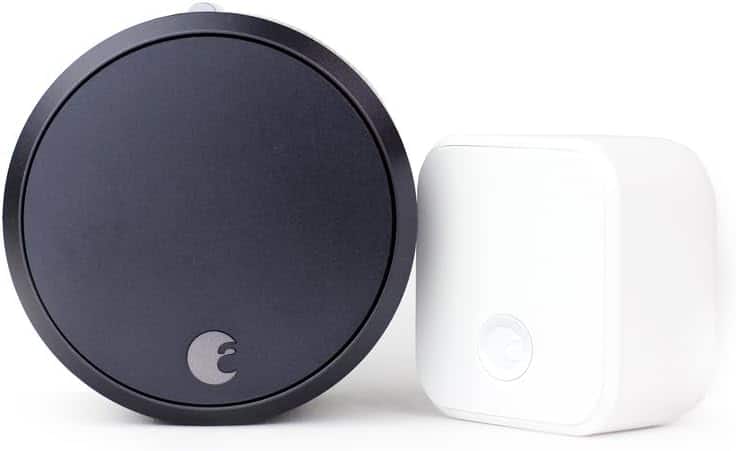
This smart lock stands out for its seamless integration and user-friendly experience, making it an excellent choice for modern smart homes.
Why it’s a top pick:
- Easy Installation: Attaches to your existing single-cylinder deadbolt on the inside of the door, allowing you to keep your original exterior lock and keys. This is ideal for renters or those who prefer a traditional look from the outside.
- Built-in Wi-Fi: No additional bridge or hub is required for remote access, simplifying setup and reducing clutter.
- Broad Compatibility: Integrates with almost every major smart home platform, including Amazon Alexa, Google Assistant, Apple HomeKit, Samsung SmartThings, and IFTTT.
- Auto-Lock/Unlock: Uses geofencing to automatically unlock the door as you approach and lock it behind you, adding a layer of convenience and security.
- Virtual Keys & Activity Log: Easily grant temporary or permanent access to guests, and monitor who enters and exits your home with a detailed activity feed.
What to consider:
- Battery Life: Uses CR123 batteries, which can be more expensive than standard AA batteries, and typically lasts 3-4 months. Keep spares on hand.
- Price: Positioned at the higher end of the smart lock market, but its features often justify the investment.
2. Wyze Lock with Keypad: Best Budget-Friendly Smart Lock
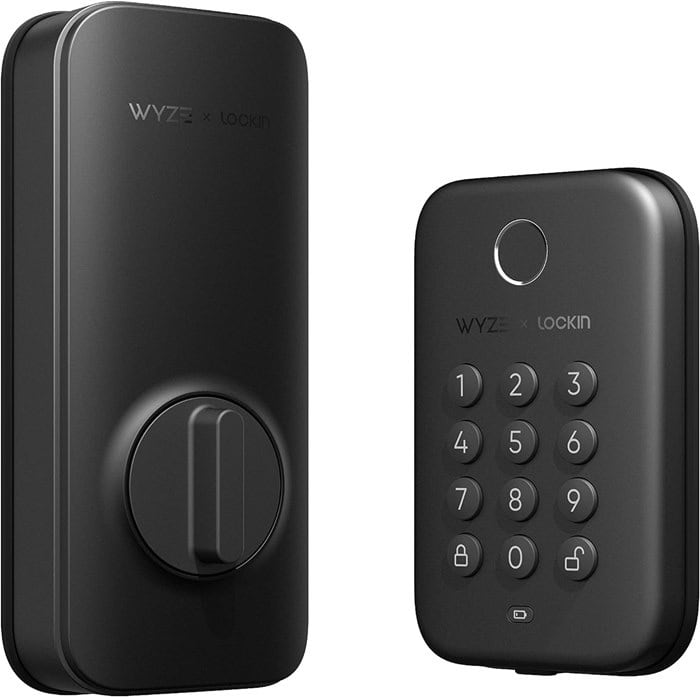
The Wyze Lock offers an impressive array of smart features at an incredibly accessible price point, making smart home security more attainable.
Why it’s a top pick:
- Affordable: One of the most competitively priced smart locks on the market, especially when bundled with its essential keypad.
- Simple DIY Installation: Like the August lock, it installs over your existing deadbolt’s interior thumb turn, retaining your original keys for backup.
- Included Keypad: Provides a convenient keyless entry option via a numerical code, perfect for family members or regular guests.
- Basic Smart Features: Offers remote control via the Wyze app, push notifications, door open/close detection (using a built-in sensor), auto-lock, and guest access management.
- AA Batteries: Uses readily available and cost-effective AA batteries, offering a decent battery life.
What to consider:
- Limited Third-Party Integration: While it integrates well within the Wyze ecosystem, its compatibility with other smart home platforms (like HomeKit or IFTTT beyond basic triggers) is more limited than premium options.
- Aesthetics: The design is functional and modern but may not have the premium feel of some higher-end brands.
3. Schlage Encode Plus Smart Wi-Fi Deadbolt: Best for Apple HomeKit & Cutting-Edge Connectivity
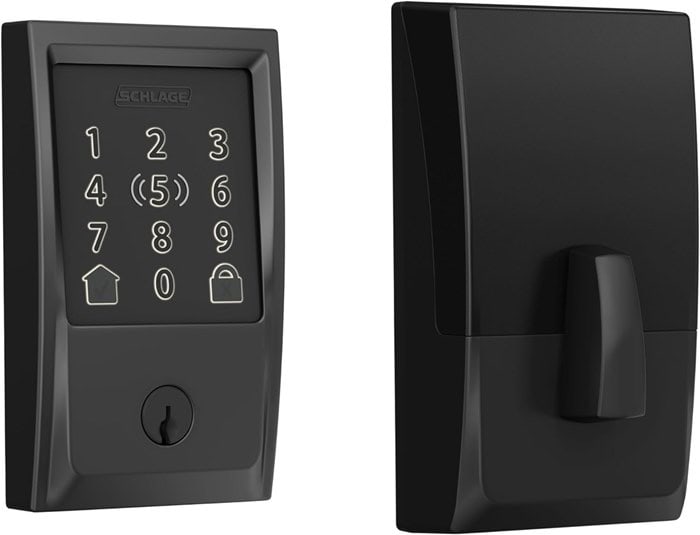
For users deeply integrated into the Apple ecosystem, the Schlage Encode Plus is a game-changer, offering unmatched convenience and security.
Why it’s a top pick:
- Apple Home Key Support: This is its standout feature. With compatible iPhones or Apple Watches, you can simply tap your device to the lock to unlock your door, even if your phone’s battery is dead (for up to 5 hours in power reserve mode).
- Built-in Wi-Fi & Apple HomeKit: Offers direct Wi-Fi connectivity for remote access and robust HomeKit integration without a separate hub.
- High Security & Durability: Schlage is known for its robust hardware. This deadbolt meets Grade 1 ANSI/BHMA standards for residential security.
- Keypad Entry: Features a backlit touchscreen keypad for code-based entry, supporting up to 100 access codes.
- Voice Control: Compatible with Siri (via HomeKit), Alexa, and Google Assistant.
What to consider:
- Price: This is a premium smart lock with a price tag to match.
- Battery Life: Runs on 4 AA batteries, typically lasting around 6 months, which is respectable given its Wi-Fi capabilities.
- Full Lock Replacement: Unlike August or Wyze, this is a full deadbolt replacement, meaning you’ll need to remove your old deadbolt during installation.
Beyond the Lock: Enhancing Your Door Security
Remember, the lock is just one part of your door’s security. To create a truly robust defense, consider these additional measures:
- Reinforced Door: A solid-core or metal door is significantly harder to breach than a hollow-core door.
- Heavy-Duty Hinges: Ensure hinges are on the inside of the door, or if exposed, use non-removable pin hinges.
- Door Reinforcement Kit: These kits add metal plates to the door frame, strike plate, and around the deadbolt, drastically improving resistance to kick-ins.
- Video Doorbell: A smart video doorbell (like Ring, Nest, or Arlo) provides an early warning system, allowing you to see and speak to visitors (or potential intruders) before they even touch your lock.
- Security Lighting: Motion-activated lighting near your entry points can deter intruders.
Final Verdict: Locking Down Your Peace of Mind
The best home security door lock for you in 2025 will depend on your personal preferences, budget, and desired level of convenience and integration.
For ultimate, no-compromise mechanical security and simplicity, a Grade 1 traditional deadbolt with a reinforced strike plate remains an excellent choice.
However, for unparalleled convenience, remote management, activity tracking, and seamless smart home integration, a high-quality smart lock is a transformative investment.
Whether you choose the steadfast reliability of a traditional lock or the innovative control of a smart system, ensure it meets robust security standards. Invest in a solution that not only protects your home but also provides you with the invaluable peace of mind you deserve. Happy locking!
Learn more about Security Systems
